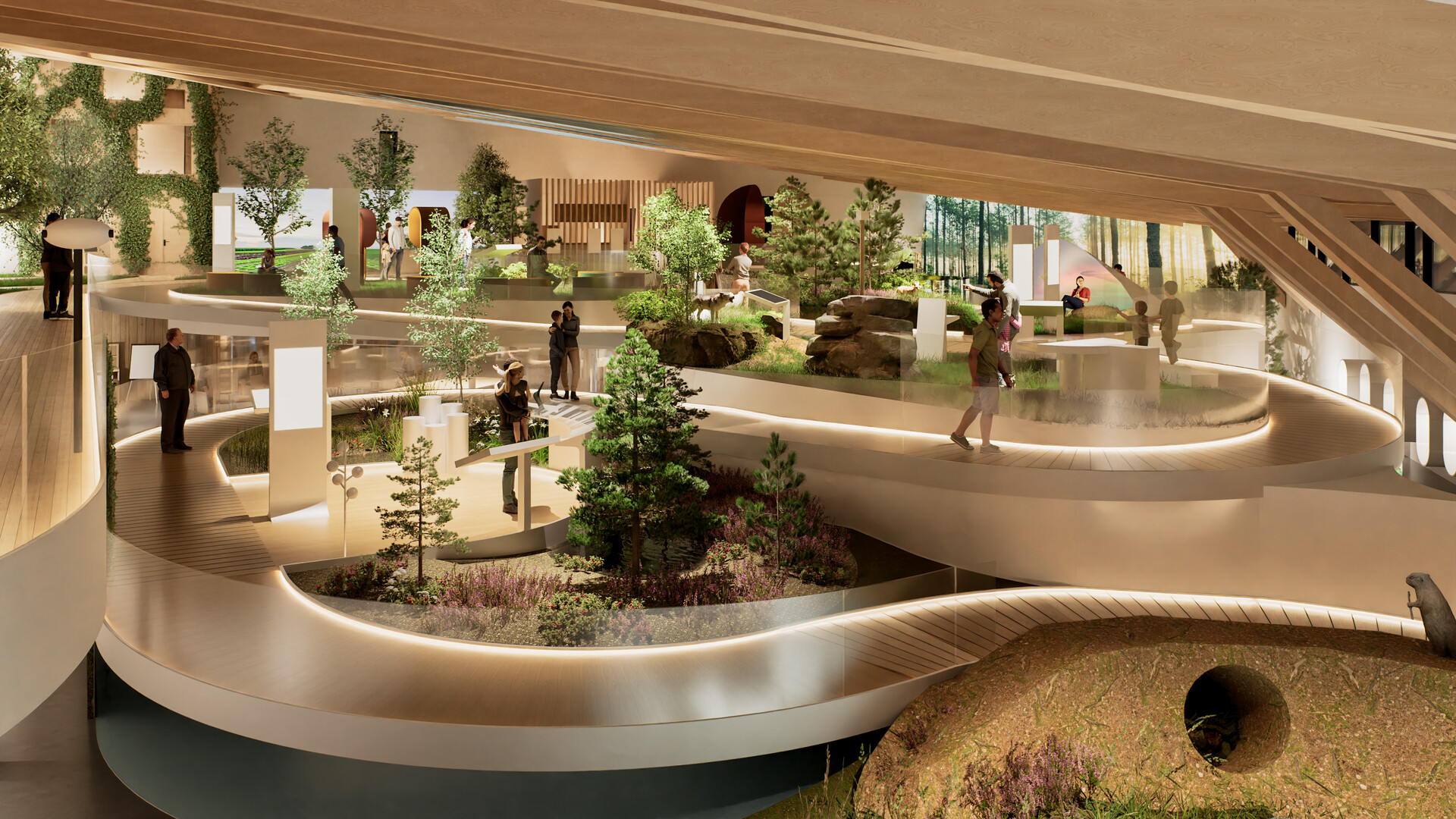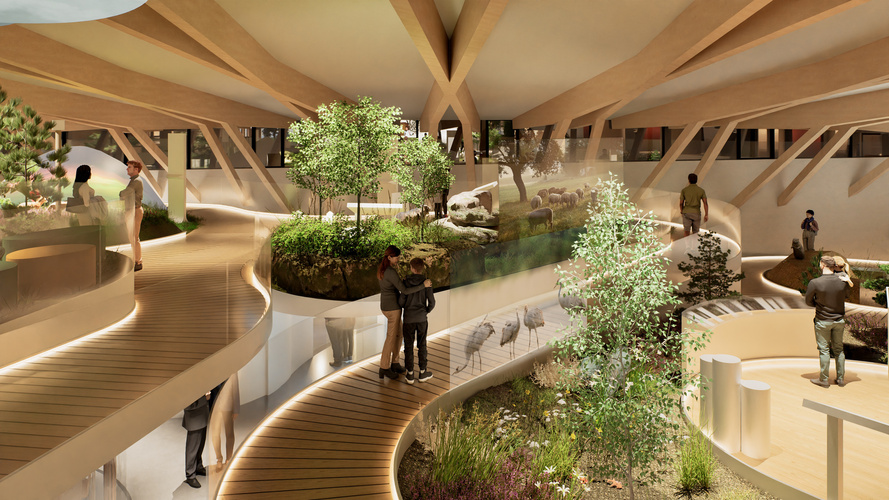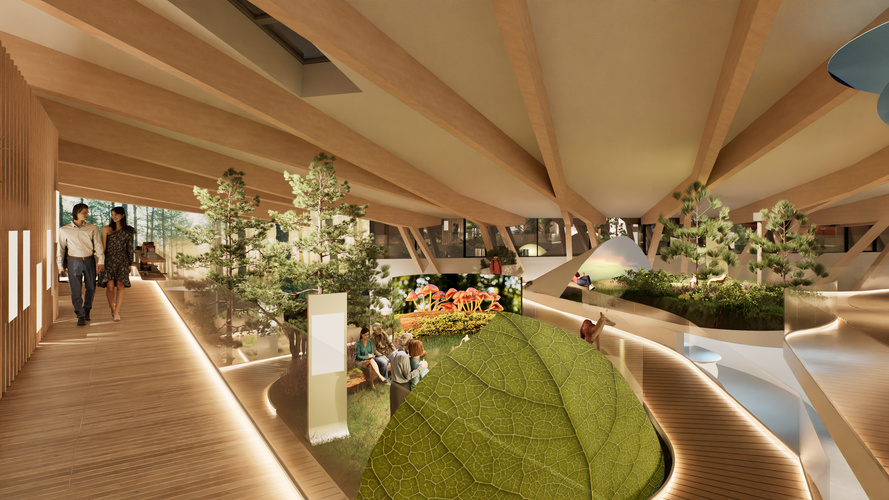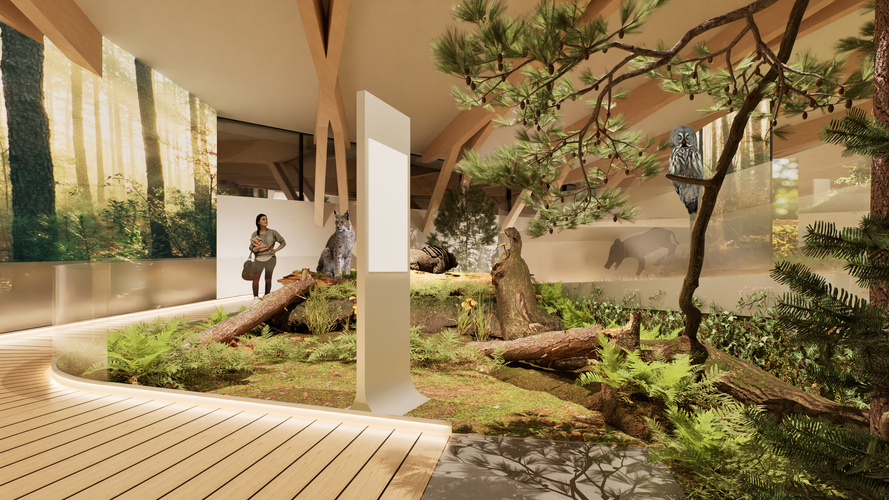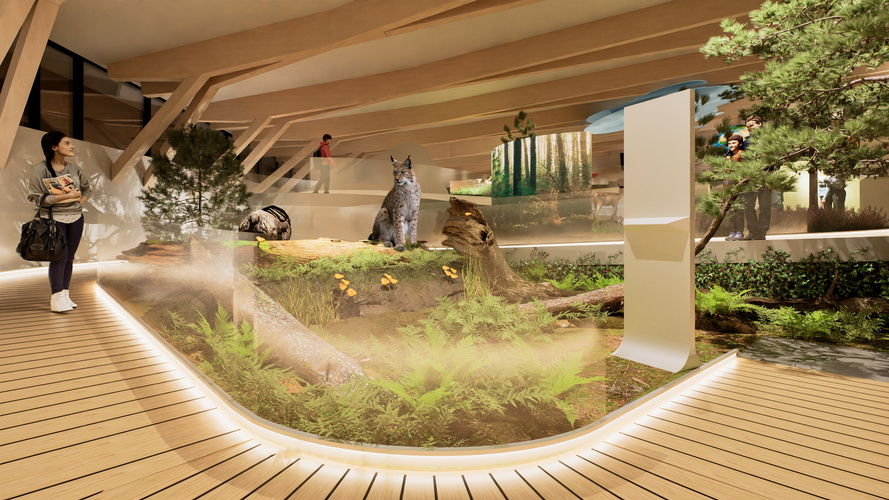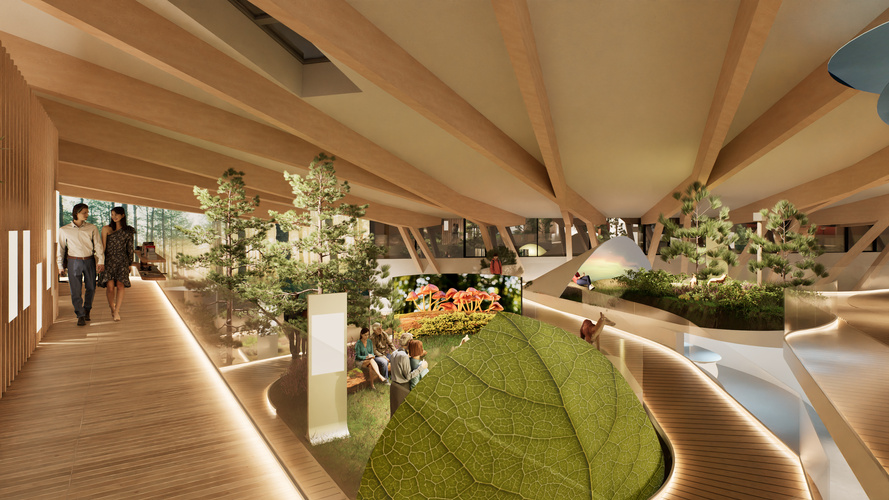Estonian Museum of Natural History
Tallin, Estonia
Together with an extraordinary team of interdisciplinary partners – Lumia, Heya, and H2E – we created "The Art of Coexistence", a visionary exhibition proposal for the Estonian Museum of Natural History. This collaborative effort won second place, leaving a profound impression with its poetic exploration of humanity's relationship with the natural world.
Inspired by the distinct Estonian landscape, the scenography invites visitors on an immersive journey through interconnected ecosystems. Like stepping stones across a marsh or archipelago, thematic islands rise along a winding ramp, each echoing the delicate beauty of meadows, forests, and coastlines shaped by wind and water.
These islands are woven together by a meandering path that mirrors Estonia's own undulating terrain, guiding visitors through a calm and harmonious flow of experiences. Intimate spaces await quiet reflection and discovery in the exhibition islands' nooks and corners.
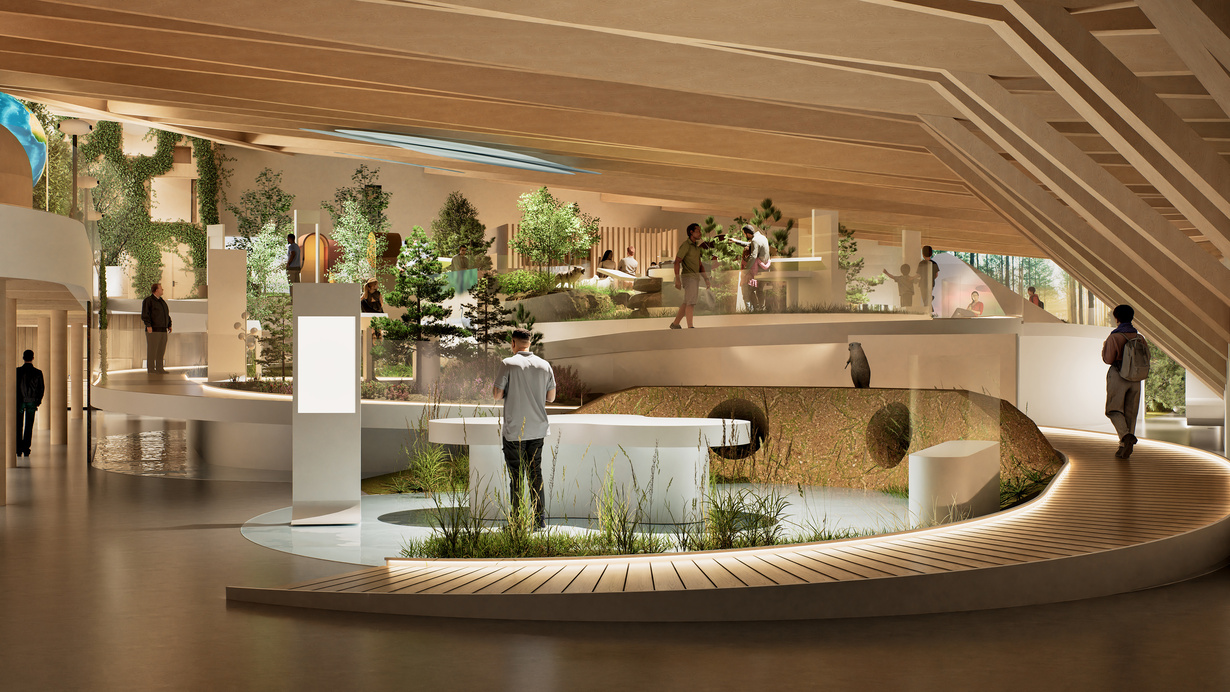
The Welcome Area is the gateway to the Estonian Natural History Museum's core exhibition, setting the tone for the journey ahead. This area connects visitors to nature by featuring an artistic installation of the Tamme-Lauri Oak – an iconic symbol in Estonian heritage.
The visitor's journey is logical and easy to use, allowing a smooth, calm flow through the topics. The visual design language is clear and calm, yet eye-catching, architectural From the jury
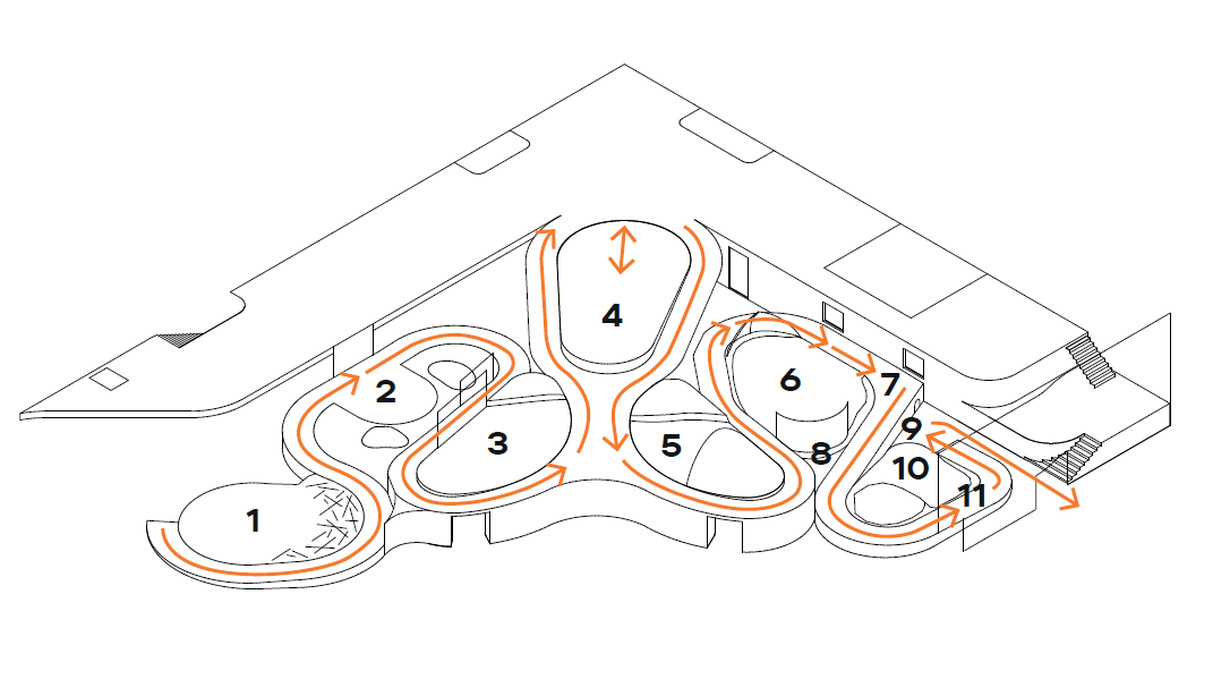
The exhibition areas along the ramp engage visitors in Eistonia´s diverse landscapes, showcasing the richness of nature.
The proposal draws inspiration from Estonian thinkers and artists, including Konrad Mägi's luminous landscapes and Jakob Johann von Uexküll's philosophy of Umwelt. Guided by Uexküll's idea of stepping into another creature's perception, the exhibition invites visitors to see the world through non-human eyes—to see the invisible life luring at the heart of a mire, to follow the delicate hunt for the nectar of a bee, or to glimpse the human itself from the point of view of a curious gaze of a seal.
The proposal reflects Estonia's cultural heritage and is rooted in intimate, local stories – the ancient Tamme-Lauri Oak stands as a guardian of memory. At the same time, Mägi’s vibrant colours echo through the landscapes. These narratives resonate with the universal theme of coexistence, urging visitors to cherish and protect the delicate balance of life on Earth by allowing visitors to see the unseen through lenses of artistic interpretation as a way to see.
The children's activity area has an original concept - animism and folklore, which gives visitors the opportunity to take a concentrated part of the so-called "back to the roots" part of the relationship between man and nature, to introduce nature's own world and spirituality From the jury
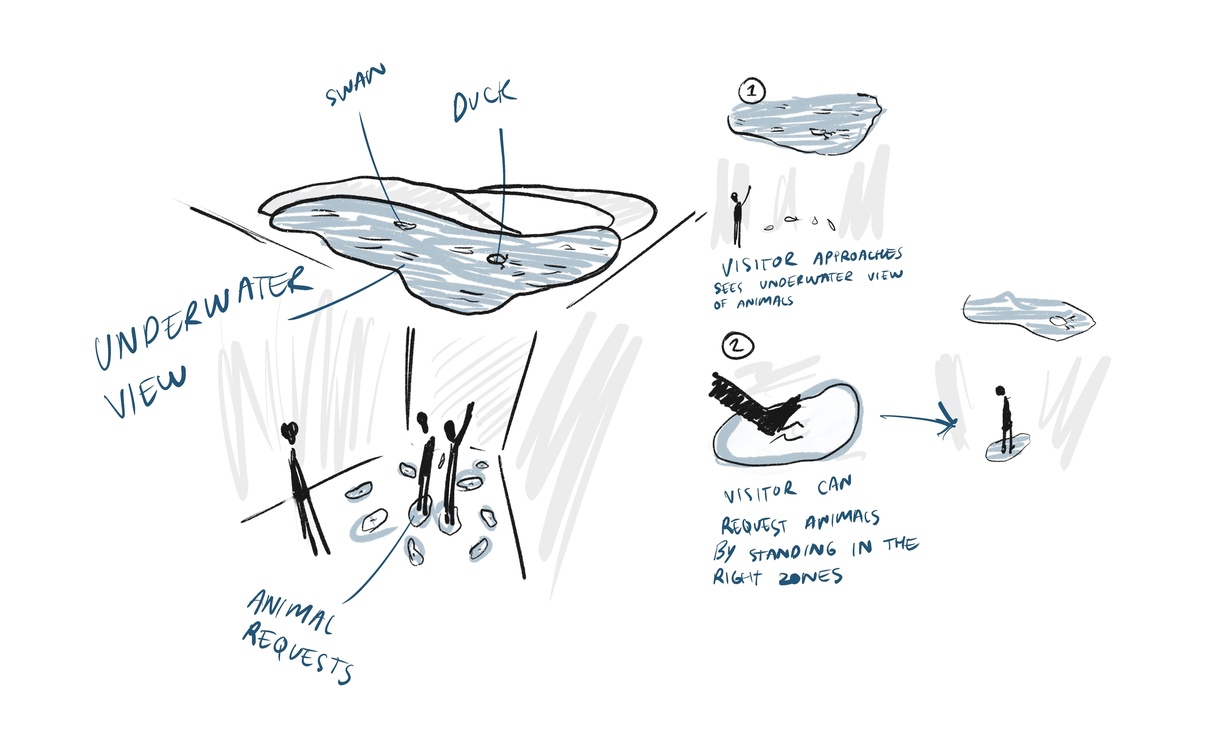
Beneath the Surface: A Curious Coastal Perspective
A biorama that upends expectations, offering an extraordinary glimpse of the coast from just beneath the sea's surface. Here, visitors encounter the underbelly of ducks, water birds diving through the water, and the occasional seal, its curiosity drawing it closer to investigate the visiting human observers themselves.
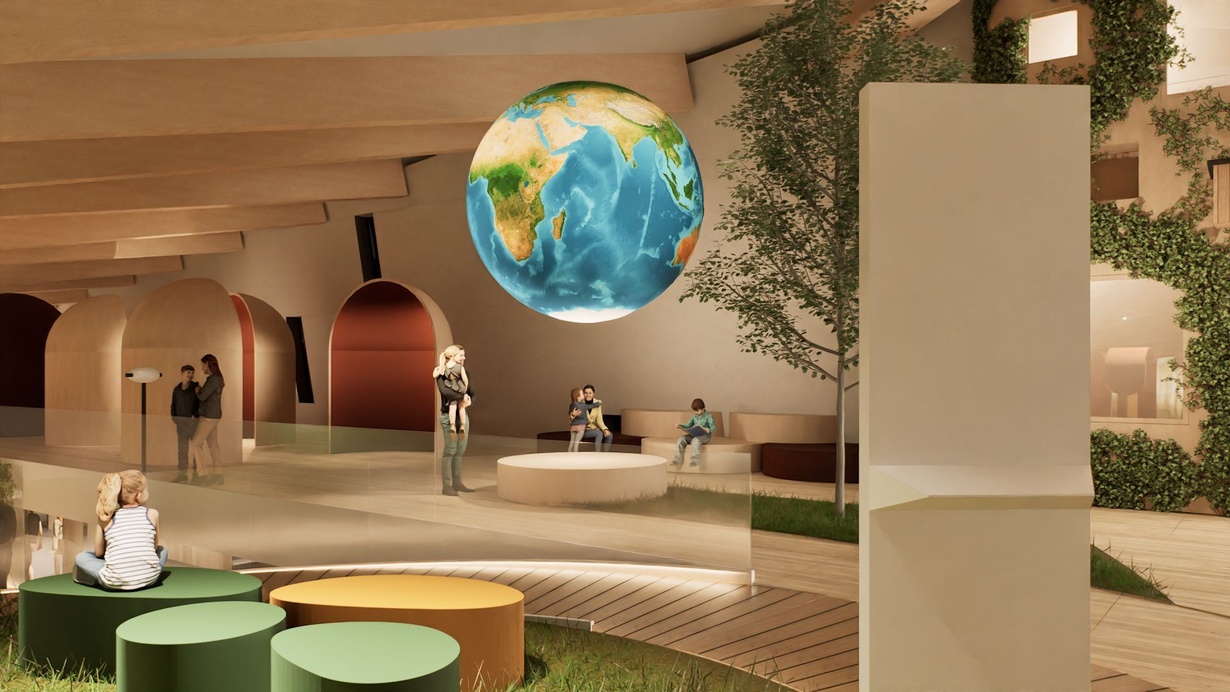
One of the most groundbreaking features is the use of open, immersive "bioramas" that dissolve the boundary between observer and environment. Unlike conventional dioramas sealed nature behind glass, these living scenes beckon visitors to step inside, to stand among swaying grasses and actively listen to the murmur of life. Here, the lines between humans and nature blur, fostering a sense of unity and belonging. The jury noted these techniques: "Stories do not simply describe what is visible to the eye but reveal more about the subject/object through interpretation."
This interactive experience opens our eyes to the unseen layers of the natural world, offering a deeper understanding of life's interconnectedness. It invites us to look beyond the surface, to appreciate the beauty of the vast and minuscule, and to connect with the non-human beings that share our planet. The proposal manages to be both provocative and eye-opening and uses innovative means of storytelling and, as noted by the jury, an emphatically Estonian vision praised for its imagination and poetic depth.
The use of technology/digital and natural/material exhibits is balanced and complements each other. Including the use of AI and AR technologies to bring different perspectives to the visitor. From the jury
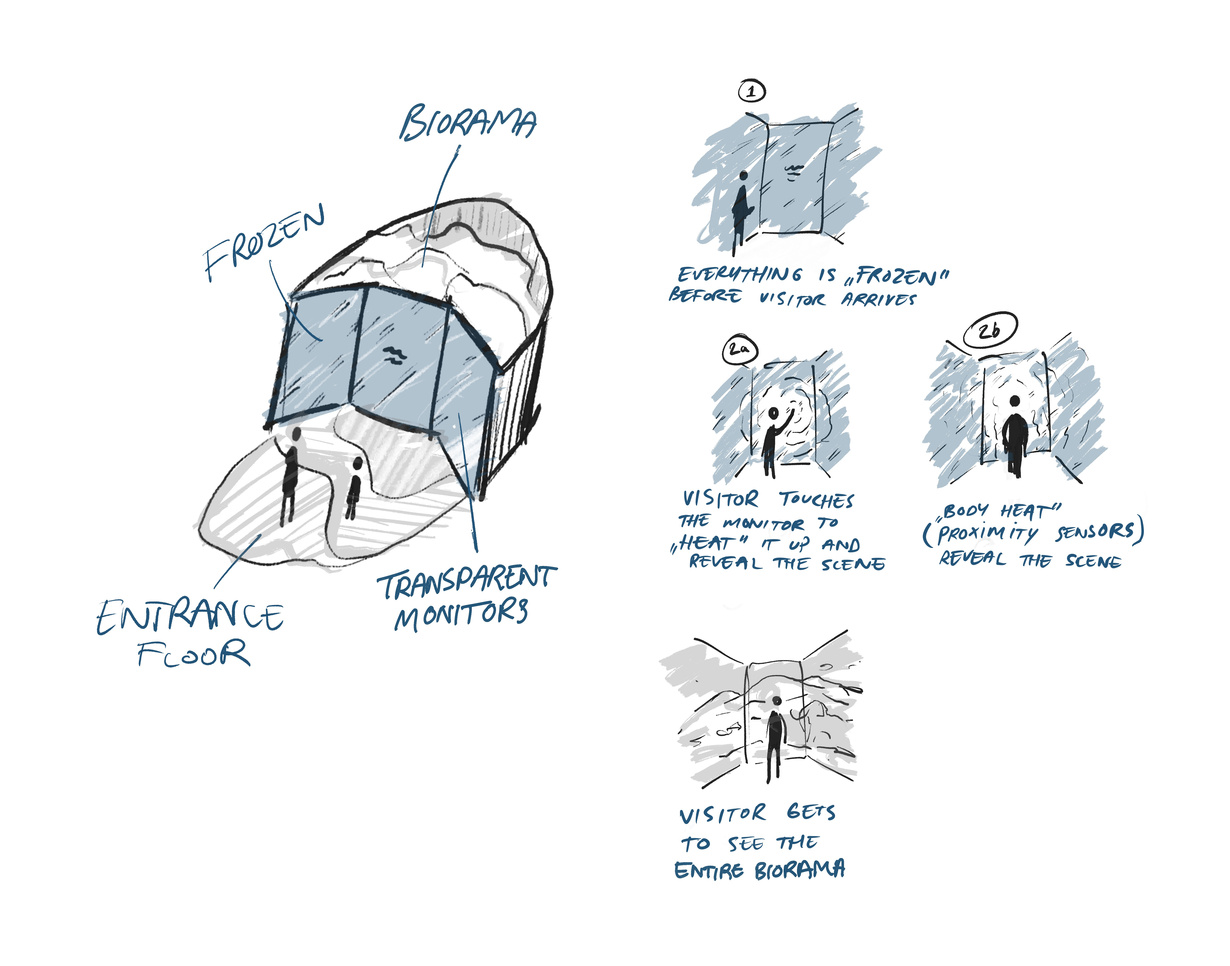
Ice Age Unveiled
The Ice Age installation begins with transparent screens, frosted to resemble frozen landscapes. As visitors approach, the "ice" melts away, revealing a vibrant biorama of an ancient world beneath the ice. Mammoths roam, glaciers glisten, and life unfolds in startling detail. This dynamic interaction bridges past and present, inviting visitors to reflect on cycles of change and the enduring traces of Earth's frozen history.
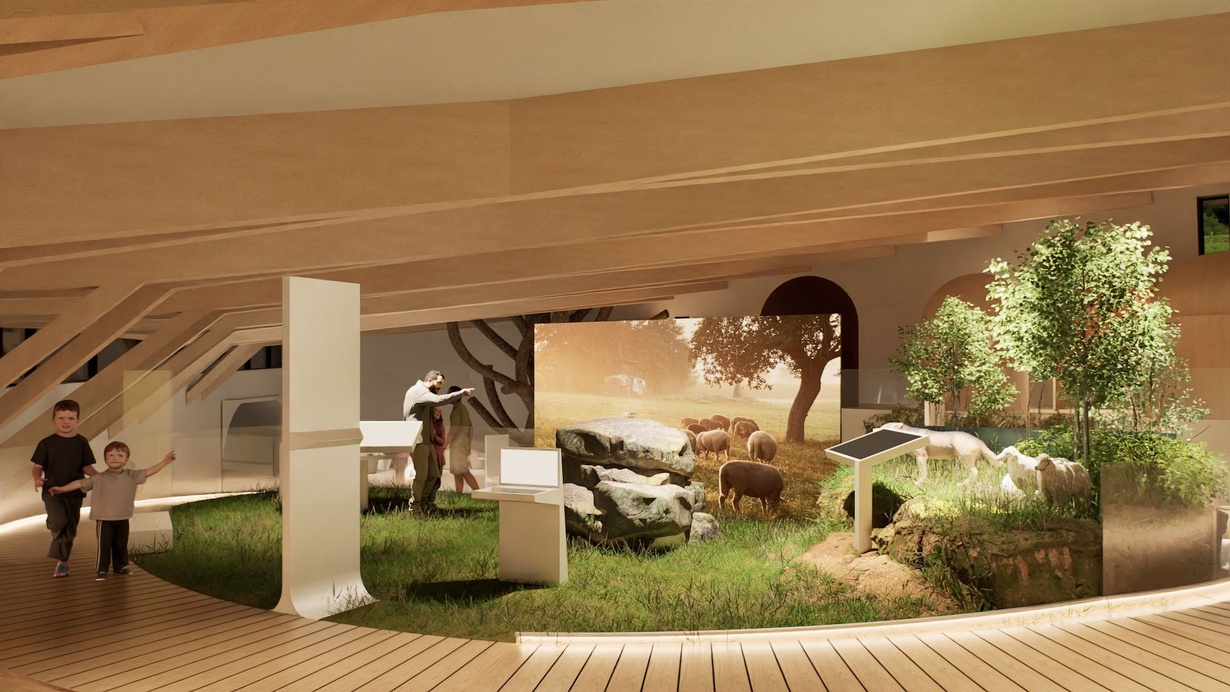
Our interactive exhibits forged tangible, immersive connections, opening new horizons. From microscopic marvels to sweeping vistas, visitors befriend non-human companions, yet grasp the context of entire ecosystems. This multiscalar experience cultivates profound empathy, challenging anthropocentric perspectives and inviting a deeper understanding of our interconnected world. By merging the intimate and the systemic, we aimed to empower visitors to reimagine their place within nature's grand tapestry.
